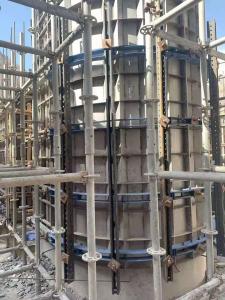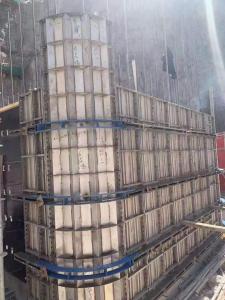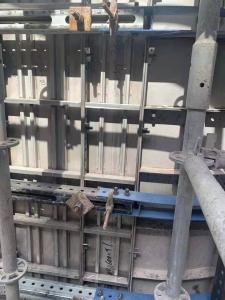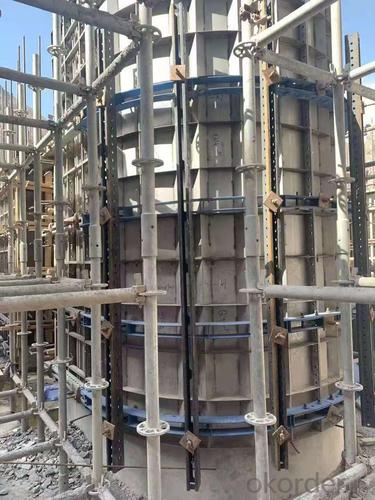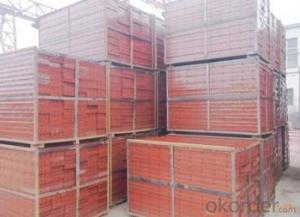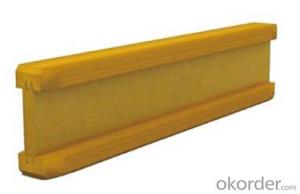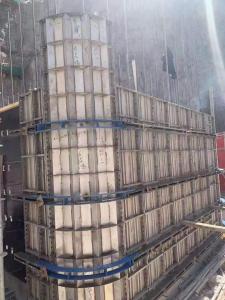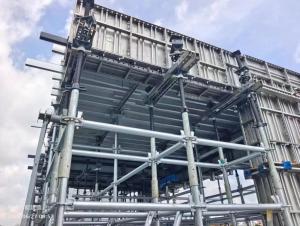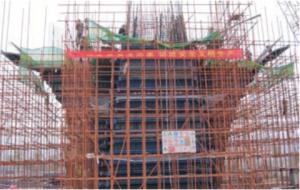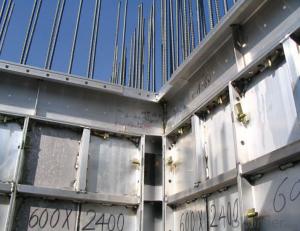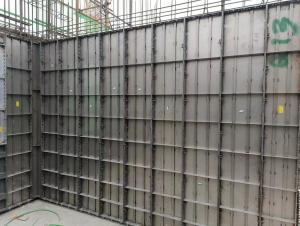Reliable supplier of formwork for construction,climbing formwork, Stainless Steel Formwork
- Loading Port:
- Shanghai
- Payment Terms:
- TT or LC
- Min Order Qty:
- 1 set
- Supply Capability:
- 1000000 set/month
OKorder Service Pledge
OKorder Financial Service
You Might Also Like
Stainless steel formwork
Replaceable size aluminum formwork :400X1200mm , 400X1500mm
CHARACTERISTICS
FAIR-FACED FINISH:
No ties through the concrete
Plywood screwed from behind
Galvanised or painted profile
HANDY:
With the same set, column boxes can be prepared with sections from 150mmx150mm up to 850mmx850mm
Adjustable with 50mm increments
Different column boxes can be assembled on top
.
Advantages:
1 Stainless steel formwork, 100% follow the design of aluminum alloy formwork system, it is interchangeable, compatible and can be used together with aluminum formwork at the same time .
2It is made of high-strength stainless steel strip by rolling and laser welding. It has good corrosion resistance and high density,is not easy to rust and has no fire hazard.
3Long service life, many turnover times, high recycling value
The number of turnovers is large, especially the characteristics of no dust, no need to brush or less mold release agent, and the characteristics of low renovation costs will bring unlimited optimistic prospects to it.
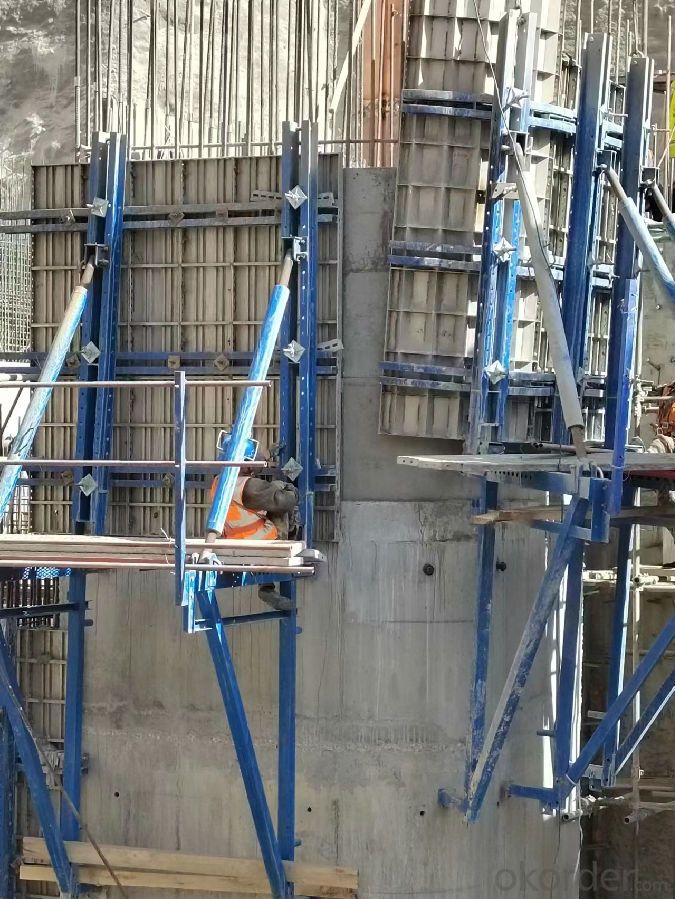
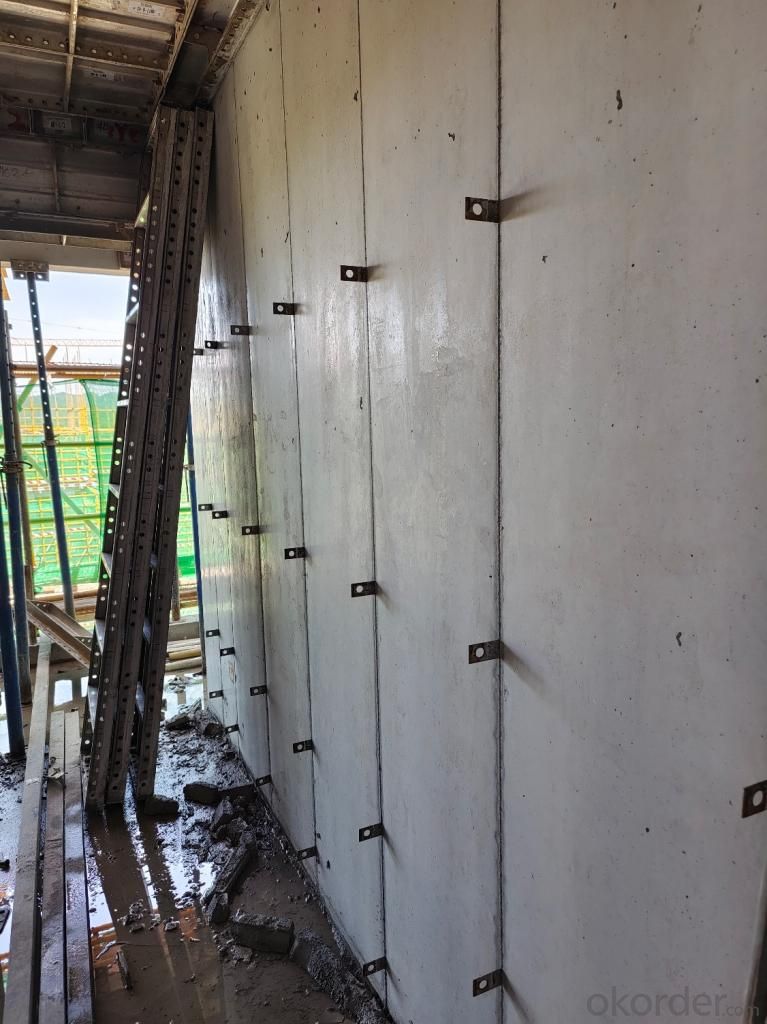
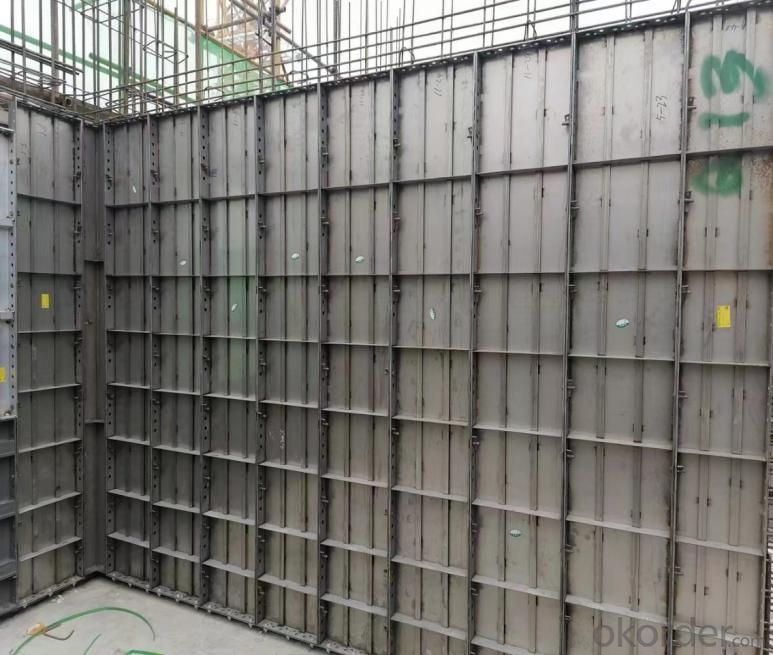
- Q: What are the common challenges associated with steel formwork?
- Construction projects face several common challenges when it comes to steel formwork. One of the main obstacles is the high initial cost associated with purchasing or renting steel formwork compared to other materials like wood or plastic. Although steel formwork is more durable and has a longer lifespan, smaller construction companies or projects with limited budgets may find the upfront investment prohibitive. Another issue is the weight and handling of steel formwork. Due to its heaviness, transporting, assembling, and dismantling steel formwork on-site can be challenging. This may necessitate additional labor and equipment, leading to increased construction costs. Proper installation and alignment of steel formwork also require skilled labor. Achieving the desired dimensions and finishes of concrete structures relies heavily on the accuracy and precision of the formwork. Mistakes or misalignments during setup can result in costly rework or compromised structural integrity. Maintenance and storage of steel formwork pose their own challenges. Regular cleaning and treatment are necessary to prevent rust and corrosion, particularly in humid or coastal areas. Sufficient storage space is also essential for protecting the formwork from external elements when not in use. Lastly, customization and adaptability can prove challenging with steel formwork. Unlike wood formwork, which can be cut and shaped on-site, steel formwork requires prefabrication and customization before use. Any changes in design or dimensions during the construction process may require additional time and cost to modify or replace the steel formwork components. Despite these challenges, steel formwork offers numerous advantages, including durability, reusability, and high-quality finishes. By implementing proper planning, training, and maintenance, these challenges can be effectively managed to ensure the success of construction projects.
- Q: Can steel formwork be used for structures with high seismic resistance requirements?
- Yes, steel formwork can be used for structures with high seismic resistance requirements. Steel is a strong and durable material that can withstand the stresses and vibrations caused by seismic activity. It provides excellent stability and structural integrity, making it suitable for constructing buildings that need to withstand earthquakes and other seismic events. Additionally, steel formwork allows for precise construction and easy removal, making it a practical choice for projects that require efficient and reliable seismic-resistant structures.
- Q: Can steel formwork be used for both residential and commercial projects?
- Yes, steel formwork can be used for both residential and commercial projects. Steel formwork is versatile and can be customized to suit different project requirements, making it suitable for a wide range of construction projects, including both residential and commercial buildings.
- Q: Are all steel plates used for beam slab prefabrication
- If all steel plates are used for precast beam and slab, the shape of prefabricated components should be adopted
- Q: What are the different types of safety precautions required when working with steel formwork?
- When working with steel formwork, some of the different types of safety precautions that are required include wearing appropriate personal protective equipment (PPE) such as hard hats, safety glasses, and steel-toed boots to protect against falling objects and accidental injuries. It is also important to ensure that the formwork is properly secured and stable to prevent collapse or accidents. Workers should be trained on safe lifting and carrying techniques to avoid strains and sprains. Additionally, regular inspections of the formwork should be conducted to identify any potential hazards or defects that need to be addressed.
- Q: Can steel formwork be used in industrial construction projects?
- Certainly, steel formwork is a viable option for industrial construction projects. Renowned for its robustness, durability, and ability to bear heavy loads, steel formwork proves suitable for demanding applications such as industrial construction. It can effectively withstand the immense pressure exerted by substantial concrete pours and can be used repeatedly, making it a cost-effective choice for extensive undertakings. Moreover, steel formwork guarantees a smooth and consistent finish to the concrete structure, ensuring exceptional quality outcomes. Furthermore, it offers adaptability in design, allowing for customization to cater to the specific needs of industrial construction ventures. In summary, steel formwork presents itself as a dependable and efficient solution for industrial construction projects.
- Q: Can steel formwork be used in hygienic or sterile environments?
- Steel formwork can be used in hygienic or sterile environments, but certain precautions need to be taken to ensure that the steel formwork does not compromise the cleanliness or sterility of the environment. Steel formwork is a durable and strong option for construction, and it is often used in a variety of applications including in hygienic or sterile environments such as hospitals, laboratories, or food processing facilities. However, it is important to note that steel is not inherently sterile and can harbor bacteria or other contaminants if not properly maintained. To ensure that steel formwork can be used in hygienic or sterile environments, several measures can be taken. Firstly, the steel formwork should be thoroughly cleaned and sanitized before being used in such environments. This can involve using approved cleaning agents and following specific cleaning protocols to remove any dirt, debris, or potential contaminants. Additionally, a protective coating or finish can be applied to the steel formwork to create a smooth and non-porous surface that is easier to clean and disinfect. This can help prevent the buildup of bacteria or other microorganisms on the formwork. Regular maintenance and inspections are also crucial to ensure that the steel formwork remains in a hygienic condition. Any signs of wear, damage, or corrosion should be promptly addressed and repaired to prevent the formation of cracks or crevices where bacteria can accumulate. It is worth noting that in some extremely sensitive sterile environments, other materials such as stainless steel or specialized plastics may be preferred over traditional steel formwork. These materials have properties that make them more resistant to corrosion, easier to clean, and more compatible with stringent hygiene or sterilization protocols. Ultimately, the suitability of steel formwork in hygienic or sterile environments will depend on the specific requirements and regulations of the environment in question. Proper cleaning, maintenance, and adherence to hygiene protocols are crucial to ensure that steel formwork can be used effectively in such environments without compromising cleanliness or sterility.
- Q: Are there any specific safety guidelines for steel formwork installation?
- Yes, there are specific safety guidelines for steel formwork installation. These guidelines include ensuring proper training and supervision of workers, using appropriate personal protective equipment, inspecting the formwork for any defects or damage before installation, following proper lifting and handling techniques, and securing the formwork to prevent collapse or displacement. Additionally, adherence to local building codes and regulations is crucial for maintaining safety during steel formwork installation.
- Q: Can steel formwork be used for both above-ground and underground structures?
- Yes, steel formwork can be used for both above-ground and underground structures. Steel formwork is highly durable and can withstand the pressures and conditions of both environments. It provides excellent strength, stability, and reusability, making it suitable for various construction projects regardless of their location.
- Q: What are the different types of coatings available for steel formwork panels?
- There are several types of coatings available for steel formwork panels, each offering unique benefits and applications. 1. Galvanized Coating: This is one of the most common types of coatings used for steel formwork panels. It involves applying a layer of zinc to the surface of the steel through a process called galvanization. Galvanized coatings provide excellent corrosion resistance, making them suitable for outdoor and high-moisture environments. 2. Epoxy Coating: Epoxy coatings are known for their superior chemical and abrasion resistance. They are applied as a two-part system that combines resin and a hardener. Epoxy coatings create a strong, durable surface that can withstand heavy use and exposure to various chemicals. They are often used in industrial settings or where high performance is required. 3. Polyurethane Coating: Polyurethane coatings offer excellent resistance to abrasion, impact, and weathering. They are commonly used in applications where a high level of durability is needed, such as in construction projects or infrastructure development. Polyurethane coatings also provide good adhesion to the steel surface, ensuring long-lasting protection. 4. Powder Coating: Powder coating is a dry finishing process where a fine powder is electrostatically applied to the steel surface. It is then cured under heat to form a hard, protective layer. Powder coatings come in a wide range of colors and provide excellent resistance to chipping, scratching, and fading. They are commonly used for aesthetic purposes or in applications where a decorative finish is desired. 5. Zinc-rich Coating: Zinc-rich coatings are similar to galvanized coatings, but they contain a higher concentration of zinc particles. These coatings provide enhanced corrosion protection and are often used in highly corrosive environments, such as marine or coastal areas. Zinc-rich coatings can be applied either by spraying or brushing. 6. Fire-resistant Coating: Fire-resistant coatings are specifically designed to provide protection against the spread of fire. These coatings create a barrier that delays the heating of steel, helping to prevent the structural collapse of a building during a fire. Fire-resistant coatings are commonly used in commercial and industrial buildings, as well as in infrastructure projects. It is important to consider the specific requirements of the project and consult with experts to determine the most suitable coating for steel formwork panels. Factors such as the environment, expected durability, and budget should be taken into account to ensure optimal performance and longevity.
Send your message to us
Reliable supplier of formwork for construction,climbing formwork, Stainless Steel Formwork
- Loading Port:
- Shanghai
- Payment Terms:
- TT or LC
- Min Order Qty:
- 1 set
- Supply Capability:
- 1000000 set/month
OKorder Service Pledge
OKorder Financial Service
Similar products
Hot products
Hot Searches
